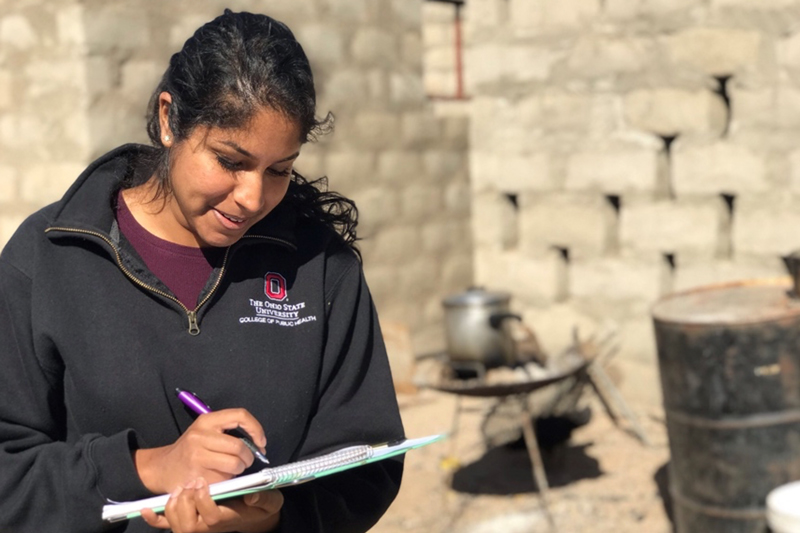
PLOS Global Public Health, an online journal, published a study conducted by Pallavia Oruganti, a former student at The Ohio State University, and Amanda Berrian, GOHi director of outreach and engagement, that explored potential zoonotic disease exposure pathways from a gender perspective.
The study sought to inform gender-sensitive risk mitigation strategies through both household observation and gender stratified focus group discussions within the semi-pastoralist Mnisi community of South Africa. Surveys and focus group discussions applied a One Health framework and ethnographic methodology to examine interactions between community residents, domestic animals, the built environment, and the natural environment to investigate potential zoonotic disease exposure pathways from a gendered perspective.
Objectives were to further describe gendered livelihood activities, how socio-cultural factors influence these roles, and how these roles may relate to exposure pathways of zoonoses. Zoonotic diseases causing acute febrile illness and representative of a variety of probable transmission routes, namely spotted fever group rickettsiosis, Q fever, and leptospirosis, were the target pathogens of investigation.
Findings showed that women more frequently tend to smaller livestock such as goats and poultry, while men tend to cattle and pigs. Observation also identified poultry, dogs, and cats as free-roaming while pigs, goats and cattle were often kept in kraals on the owner’s property. When grazing, goats and cattle were able to travel to the bush near the house. It was also noted that men wore covered protective work clothes more commonly than women did. A table of human-animal-environment interactions that can serve as critical points to implement control measures can be seen in Figure 6 of the publication.
Learn more about Oruganti’s work and findings.